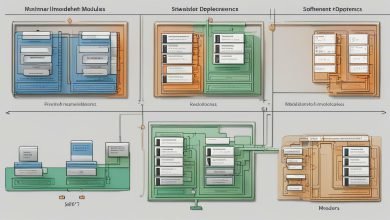
Modern coding practices demand a proactive approach towards software development. Test-Driven Development (TDD) is an innovative way to develop software while keeping quality and reliability at the forefront. Tests play a vital role in guiding the development process and ensuring the production of high-quality software.
In this article, we’ll explore the benefits and importance of TDD in modern coding practices. We’ll delve deeper into the process of TDD, its advantages, and practical implementation.
Key Takeaways
- Test-Driven Development (TDD) is an essential approach to modern coding practices.
- Tests guide the development process and ensure the production of high-quality, reliable software.
- TDD helps in ensuring better code coverage, reducing bugs and errors, facilitating code refactoring, and promoting collaboration within development teams.
- Practical implementation of TDD requires using the right tools and frameworks for software and unit testing.
- Adopting TDD in different coding environments requires following guidelines and best practices to ensure test coverage and frequent test execution.
Understanding Test-Driven Development (TDD)
Test-Driven Development, commonly known as TDD, is a software development approach that puts a strong emphasis on ensuring quality through testing. It is an iterative process where developers write unit tests for their code before writing the code itself.
These tests guide the development process, helping developers to identify potential issues earlier in the development cycle, making it easier and quicker to fix them. TDD is based on the idea of writing small tests that ensure the code is doing what it is supposed to do. It improves the quality of the code by reducing the likelihood of errors and bugs. When done correctly, it leads to higher customer satisfaction and a reduction in maintenance costs.
The TDD approach involves writing tests at every step of the development process, running them frequently, and using a continuous integration approach to detect issues early.
Principles of TDD
The principles of TDD are simple:
- Write a test for a small piece of functionality.
- Run the test and make sure it fails.
- Write the code to pass the test.
- Run the test again. If it passes, it can be considered for deployment.
- Refactor the code to ensure it is maintainable and adheres to best practices.
- Repeat the process for the next piece of functionality.
By following these principles, developers can ensure that the code they write is tested, maintainable, and reliable. The TDD approach is simple to understand and can be applied to any type of software development project.
Advantages of TDD
The advantages of TDD are numerous, and they can make a significant impact on the quality and reliability of your software. Some of the main benefits of TDD include:
- Improved code quality.
- Faster feedback loops.
- Reduced bugs and errors.
- Facilitated code refactoring.
- Promoting collaboration within development teams.
By writing tests first, developers are forced to think about what they want their code to do before writing it. This helps to reduce the likelihood of bugs and errors, and it ensures that the code works as expected. Additionally, TDD encourages developers to write maintainable code, making it easier to refactor as requirements change. Finally, TDD promotes collaboration within development teams by ensuring that everyone is working towards a common goal.
The Benefits of Test-Driven Development (TDD)
Test-Driven Development (TDD) offers numerous benefits for modern coding practices. Adopting TDD brings value to developers, product owners, and end-users alike.
Better Code Coverage:
TDD ensures that all code is covered by a test. This means that developers can detect and fix issues earlier in the development process. With better code coverage, they can be confident that their code delivers the expected functionality, reducing the risk of bugs and errors in the final product.
Reduced Bugs and Errors:
TDD allows developers to catch bugs and errors before they make it into the final product. By writing tests that exercise the code, they can identify and solve issues early on, ensuring that the final product is of higher quality and reliability.
Facilitated Code Refactoring:
TDD makes it easier for developers to refactor their code with confidence. By running tests continuously, they can quickly identify any changes that break the system. This allows them to make the necessary updates to the code while ensuring that everything else still works as expected.
Promoting Collaboration within Development Teams:
TDD encourages developers to work together and share knowledge. By defining clear interfaces for their code, they can collaborate seamlessly, ensuring that everyone is working towards the same goal. This promotes collaboration and team dynamics, leading to a more efficient and productive development process.
In conclusion, Test-Driven Development (TDD) is a critical approach to modern coding practices. By adopting TDD, developers can ensure better code coverage, reduced bugs and errors, facilitated code refactoring, and promote collaboration within development teams. It is a valuable practice for developers to embrace and incorporate into their coding journey.
Implementing Test-Driven Development (TDD) in Modern Coding
Implementing Test-Driven Development (TDD) in modern coding practices requires following certain guidelines and best practices. The first step is to choose a suitable unit testing framework for your language and development environment, such as JUnit for Java or NUnit for .NET. These frameworks provide a testing framework for creating and running tests, as well as assertion methods for checking expected results.
Once you have selected a unit testing framework, you can start writing tests before writing any code. This approach helps produce better quality code and reduces the risk of introducing bugs. Tests should be written to cover all possible scenarios and edge cases, ensuring high code coverage. This is important as it helps identify and fix bugs early in the development cycle, when they are easier to fix.
It is vital to run tests frequently during the development process. This ensures any issues are identified and addressed early in the development cycle, reducing the overall cost of fixing bugs. Tests should also be run automatically as part of a continuous integration approach, providing feedback on code changes as soon as possible.
When adopting TDD, it is important to ensure that every function has a testable interface. This means that the function should have clear input and output parameters and no hidden dependencies or side effects. This facilitates testing and promotes more modular, maintainable code.
Finally, it is crucial to emphasize test coverage and frequent execution. This reduces the likelihood of bugs and errors creeping into the code. TDD should be viewed as an iterative process, where tests and code evolve simultaneously, improving the overall quality and reliability of the software product.
The Benefits of Test-Driven Development (TDD)
Test-Driven Development (TDD) has become an essential approach in modern coding practices. By writing tests before writing code, developers can ensure better code coverage, reducing bugs and errors. TDD also helps in facilitating code refactoring and promoting collaboration within development teams. Overall, TDD enhances the reliability and quality of software products.
One of the significant benefits of TDD is improved code quality. Writing tests before implementing code ensures that each function is tested in isolation and covers all possible scenarios. This approach results in cleaner code with fewer bugs and errors. Moreover, by executing tests frequently, developers can catch issues earlier in the development process, leading to faster feedback loops.
Another advantage of TDD is better maintainability. By writing tests that cover all possible scenarios, developers can ensure that even when changes are made to the code, the software still behaves as expected. This approach results in code that is easier to maintain and update, reducing the chances of introducing bugs or errors.
The Importance of Test-Driven Development (TDD) in Modern Coding
Test-Driven Development (TDD) is an essential practice in modern coding. By ensuring that each function is tested in isolation and covering all possible scenarios, developers can significantly reduce the chances of introducing bugs or errors. TDD also promotes collaboration within development teams, leading to higher quality and more reliable software products.
Implementing TDD in modern coding practices is relatively easy, thanks to the availability of various tools and frameworks. For example, developers can use unit testing frameworks, such as JUnit or NUnit, to test individual functions. They can also use continuous integration tools, such as Jenkins or Travis CI, to automate running tests frequently.
Conclusion
In conclusion, Test-Driven Development (TDD) is an essential approach in modern coding practices. By writing tests before writing code, developers can ensure better code coverage, reducing bugs and errors. Thus, TDD leads to higher quality and more reliable software products. As a developer, implementing TDD can significantly improve your coding practices and lead to better career prospects. So, embrace the future and adopt TDD as your testing approach.
FAQ
Q: What is Test-Driven Development (TDD)?
A: Test-Driven Development (TDD) is a coding practice that involves writing tests before writing the actual code. It follows a cycle of writing a failing test, writing the minimum code required to pass the test, and then refactoring the code for better design and maintainability.
Q: Why is TDD important in modern coding practices?
A: TDD is important in modern coding practices because it helps ensure better code quality, reduces bugs and errors, and promotes collaboration within development teams. It also leads to faster feedback loops and better maintainability of the codebase.
Q: What are the benefits of TDD?
A: Some benefits of TDD include improved code coverage, reduced bugs and errors, easier code refactoring, and enhanced collaboration within development teams. TDD also enhances the overall quality and reliability of software products.
Q: How do you implement TDD in modern coding?
A: To implement TDD in modern coding, you can use various tools and frameworks available for unit testing and software testing. It is essential to focus on test coverage and frequent test execution. Adopting TDD best practices and guidelines is also crucial for successful implementation.








